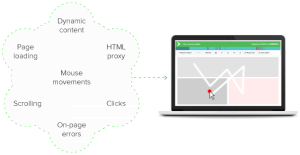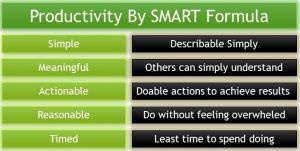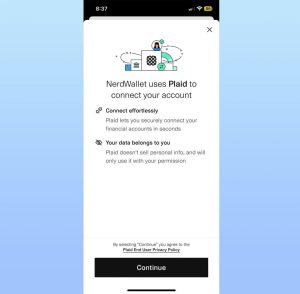Like the devilishly tempting Hostess Ding Dongs treat, a proposal cover letter has to be short, sweet, and dense. Unlike that aforementioned hockey puck of delectability, proposal cover letters cannot be mass-produced. To write a proposal cover letter with nary a wasted word, you first need to understand its strategic significance in the overall proposal.
I’ve spent more than 17 years on proposals and have written hundreds of proposal cover letters. When I started, we printed out proposals and created huge binders to share with reviewers. Reviewers would open the binders to see the proposal cover letter, then an executive summary, and then dig into the proposal itself. Binders are part of a bygone era; there’s been a big digital shift since I started.
Requests for paperless submissions and the growing popularity of online portals has altered the strategic significance of the proposal cover letter. It’s gone from a “must-have” element, to a “nice-to-have” one. My background is predominantly healthcare and insurance. Anecdotally, maybe only 30% of requests for proposals (RFPs) in healthcare and insurance request executive summaries while most volunteer that a cover letter is optional. If they give you an option, take it.
Some online portals don’t even give you an opportunity to include extra documents like cover letters. In such cases, you now have to include the cover letter as part of your proposal PDF. At the same time, RFPs are more complex than ever, requiring more details in submitted proposals. Issuers expect you to have your content in order, and a lot of it.
Speaking of issuers and what they’re looking for in proposal cover letters: They don’t need information that they can find on your website, that they can Google, or that sounds canned. They want to make sure you’ve reviewed the RFP requirements, and it’s absolutely essential to hit them with that up front, in your proposal cover letter. Especially if your solution meets all of the issuer’s requirements. Emphasize that fact simply and directly.
What is a proposal cover letter?
The proposal cover letter is meant to frame up your RFP proposal. It’s not a rehashing of the proposal or executive summary. It’s a vehicle to thank the issuer for the opportunity to respond, to say, “We’ve seen your business requirements and composed this proposal because we think we’re the best partner for you.” Think of it as the bow on your RFP proposal package.
Whether paper, PDF, or stone tablet, one thing that hasn’t changed about the proposal cover letter is that it’s your first opportunity to declare the value propositions that differentiate yours from competitive proposals. These value props will be the threads that weave through your proposal, from cover letter, to executive summary, to answers to questions.
As far as length, I aim for a page and a half when I write proposal cover letters. Try to keep it under two. Go longer only if a template or specific framework for the cover letter is provided by the issuer, which is sometimes the case in government RFPs.
Why a good proposal cover letter matters
RFP reviewers will be looking for deviations in responses. Deviations among responders as well as deviations from their (the issuers) requirements.
When you can write a cover letter and state, “After reviewing the RFP, we are confident that our solution meets all requirements and detail that fact in our proposal,” you make a compelling argument for reviewers to concentrate on how your proposal illustrates how you solve problems. They’ll notice cover letters that do not mention something that direct, and will review those proposals to look for where the solutions fall short.
When should you write the proposal cover letter?
It’s page one so it should be written first, right? Not necessarily. I’m a proponent of writing the executive summary first, the cover letter second, and then building the proposal. Certainly review the RFP first so you can determine what it’s asking for. But don’t just jump into a response from there. Take the time to establish the value props that will make it a cohesive proposal.
Writing the executive summary first helps you formulate your argument and determine which content you’ll need for the proposal. Once you know what you need to be persuasive and how you can solve the issuer’s problem, then you can develop the three-to-five value props (I try to boil it down to three solid, unique value props) that you can define in the proposal cover letter.
Who signs the proposal cover letter?
Notice I didn’t title this section, “Who writes the proposal cover letter?” The person who writes it and the person who signs it may not be one and the same.
If your proposal team is fortunate enough to have a dedicated writer, then have them write the letter based on input from the frontline sales rep. Whoever writes the letter must be fully informed of response strategy and have intimate knowledge of the proposal and executive summary. Strategy, voice, and style need to be consistent across all documents (cover letter, executive summary, and proposal).
Who signs it depends on a variety of factors. In most cases, the frontline sales rep will sign the proposal cover letter. They have the relationship, own the strategy, and likely conducted the discovery that informed the proposal. However, it’s not uncommon for an executive sponsor such as a VP of sales to sign. The thinking being that executive reviewers may appreciate seeing a proposal that’s been vetted by a fellow executive.
There are also those cases when the executive of executives, the CEO, signs the letter. There are two common scenarios for this play. One, the RFP may be large enough to represent a significant percentage of a responder’s annual revenue. Two, the responding organization is concerned with appearing relatively small, and in an effort to improve its stature, seals the proposal with a CEO’s signature.
There’s definitely some gamesmanship at play here. Even so, the name on the letter will never overshadow the content of the proposal.
7 steps to write a proposal cover letter
The compact nature of the proposal cover letter makes it difficult to fit everything in one or two pages. Good writers are valuable assets in these instances. Every proposal cover letter should contain the following sections:
- Thank the issuer (and broker, where applicable) for the opportunity.
- Recite your understanding of the opportunity to validate that you reviewed the RFP requirements.
- List your abilities to meet requirements. If you can meet all of them, lead with that fact.
- Describe your value propositions. You’re trying to portray that, “This is what we bring to the table, and that’s why we’re the best choice.”
- Provide a high-level future snapshot of what business will look like after your solution is chosen.
- Conclude with a persuasive delivery of your understanding of next steps: “We look forward to the opportunity to discuss our proposal further.” Show that you’re able and willing to move forward in the sales lifecycle.
- Sign it from the frontline sales representative or executive sponsor. This should not look like a form letter from the organization as a whole.
3 common mistakes to avoid
Beyond the mistakes of not including a proposal cover letter at all or writing one that’s too long, proofread your next letter for the following mistakes before sending it.
- Avoid repeating anything from the executive summary or proposal. Those documents need to live on their own, just like the proposal cover letter.
- Don’t waste space with your resume. Something like this…
RFPIO’s growing list of 600+ clients including 40+ Fortune 500 organizations continue to take advantage of our one-of-a-kind Unlimited User licensing model, expanding their usage on the platform to scale organizational success. With RFPIO as their team’s support system, every day they break down silos by facilitating collaboration and efficiency in their RFx response process….is boilerplate that can appear elsewhere in the proposal or not at all, given that it’s likely available to the issuer on your corporate website.
- If a broker is involved, thank them, too. The proposal cover letter is also an opportunity to directly address the issuer. This can be particularly valuable when a broker is involved. Some issuers rely on RFP brokers to sift through responses to make sure only the best possible solutions get serious consideration. Ignore these brokers at your peril. While the response and executive summary will address the issuer and the problem at hand, the cover letter is where you can give a nod to the broker. Acknowledging their involvement in the process and thanking them for the opportunity as well will at the very least alert all reviewers that you paid close attention to the RFP requirements.
- Don’t guess. Make sure you or someone on your team does the legwork and discovery to inform your response strategy. The more you have to guess, the longer the letter will take to write.
Proposal cover letter example
Feel free to use the proposal cover letter example below as a template for your next letter. One of the many advantages of proposal building software such as RFPIO is the automation of the cover letter process. Don’t get me wrong, you still have to write it, but RFPIO helps:
- Access and write in the template within the platform (no need to toggle back and forth between a word processor and whatever application you’re using to build your proposal)
- Include identical brand elements as the proposal and executive summary
- Add the cover letter to the front of the proposal and/or executive summary when you output it for submission
When you use the following example, you’ll need to swap out the RFPIO-centric items with your own company and solution information as well as the custom value props for that specific proposal. The three value props highlighted in the example are Salesforce integration, data security, and customer support. For your letter, these will be specific to your solution and the problem stated in the RFP.
Hi [Issuer(s) first name(s)],
Thank you for considering RFPIO as your potential vendor for RFP automation software. We are cognizant of the effort it takes to make a selection like this, so we very much appreciate the opportunity. First and foremost, RFPIO meets all of the requirements detailed in your RFP. That’s illustrated in greater detail in this proposal. In the meantime, the following capabilities make us confident that RFPIO is the most qualified company and solution for [issuing company name’s] [RFP title].
- Helping businesses improve and scale their RFP response process for greater efficiency. The time and resource savings reported to us from our clients has allowed them to participate in more proposals and provide high-quality responses that create additional revenue opportunities.
- Automating the import and export functions, centralizing content for RFPs, and facilitating collaboration among key stakeholders.
- Managing knowledge and content through our AI-enabled Answer Library.
- Giving clear visibility into the entire RFP process through reports and dashboards—including project status and progress, and analytics for actionable insights.
We know that it’s important for [issuing company name] to find a solution with a strong integration with Salesforce. This proposal details RFPIO’s integration with Salesforce, and how it will work for you. In addition to that, RFPIO’s open API allows for integrations with many other technologies for cloud-storage, collaboration, and other desired platforms.
We also take your data security concerns highlighted in the RFP very seriously. You can be assured that your data will be safe and accessible. We work with a variety of enterprise customers and understand the necessary level of security that is required. From the beginning, we made it a priority to build security right into RFPIO’s technology, which we continue to maintain. We are SOC 2 and ISO27001 certified, while continuing to pursue other best-in-class certifications to ensure security.
Regarding your requirement for ongoing support following implementation: When it comes to customer support, our technical and account managers are high performers. We have an expert group of 110 nimble programmers and developers who are always ready to provide quick technical fixes (that you can request right within the solution). Our reliable and attentive account team is ready to fully support [company name] should we move forward as your vendor.
Upon deploying RFPIO, it’s intuitive user experience is simple to get used to. You’ll also get free access to RFPIO University for all your training needs, now and in the future. Getting started is as simple as loading that first project. The whole team will be collaborating from there. As your Answer Library grows, machine learning will provide more and more automation opportunities. It won’t be long before you see a drastic uptick in proposal quality and number of proposals submitted.
If you’re interested in comparing our solution to other comparable tools, we recommend that you visit software review platform G2 Crowd’s top RFP Solutions grid. This information is based on user satisfaction and places RFPIO at the top in all categories.
We look forward to the opportunity to discuss our proposal further. We appreciate your consideration, and wish you luck on your selection.
Thanks,
[Signee’s name]
[Signee’s title]
You should have it “cover”-ed from here
If you’ve done your research and client discovery, and you know the value props specific to the RFP that you’ve already reviewed, then letter writing will go fast. The better you know the client and people involved, the easier it is going to be for you to tailor the proposal cover letter, the executive summary, and, most importantly, the RFP proposal.
To learn more about how RFPIO can help you write better proposal cover letters, schedule a demo today!
Business & Finance Articles on Business 2 Community(44)





